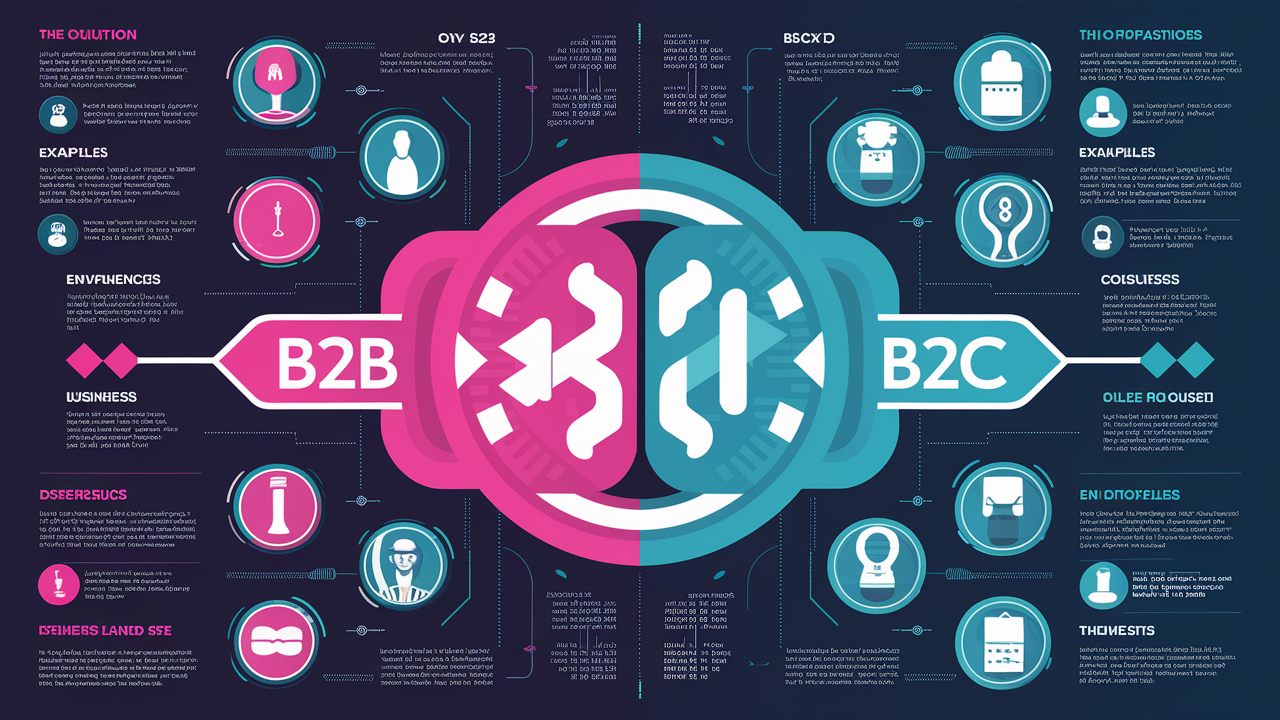
Artificial intelligence is a whirlwind of innovation, transforming business operations and consumer experiences. From streamlining sales and marketing to revolutionizing healthcare and entertainment, AI's reach extends across industries. Yet, not all AI products are created equal. Understanding the crucial distinctions between B2B (business-to-business) and B2C (business-to-consumer) offerings is essential to grasp their unique value propositions and target audiences.
In this in-depth article, we'll dissect the world of B2B and B2C AI products and offer insights into their growth trajectories.
B2B AI Products: Empowering Businesses from Within
B2B AI products are designed to solve core business challenges, streamline operations, enhance decision-making, and unlock new levels of efficiency. Let's break down their characteristics and use cases:
- Target Audience: B2B AI products cater to specific roles and industries. Examples include:
- CEOs and executives seeking strategic insights from AI-powered data analytics
- Sales and marketing teams using AI for lead generation and customer segmentation
- HR departments leveraging AI tools for candidate screening and bias reduction
- Manufacturing plants deploying AI for predictive maintenance and quality control
- Value Drivers: At their core, B2B AI solutions focus on:
- Cost Reduction: Automation of manual tasks reduces labor costs
- Productivity Gains: AI empowers employees to focus on more strategic work
- Data-Driven Decision Making: AI insights unearth patterns within large datasets
- Competitive Advantage: AI-powered innovation creates differentiation in the market
B2B AI Examples
- Healthcare: AI analyzing medical images for faster diagnoses, or patient data to personalize treatment plans.
- Finance: AI-powered fraud detection systems and algorithmic trading tools for investment optimization.
- Agriculture: AI optimizing crop yields through sensor-driven irrigation systems, and predicting weather patterns to minimize crop losses.
Case Studies: B2B AI in Action
- Jasper (formerly Jarvis): Popular AI-writing assistant for creating marketing materials, blog posts, and ad copy. It saves businesses time and resources https://www.jasper.ai/
- Gong: AI-powered sales tool that analyzes conversations, providing insights on customer interactions and deal-closing techniques https://www.gong.io/
- Eightfold AI: Talent management platform using AI to match candidates with ideal job openings, reducing hiring time and improving candidate-job fit https://eightfold.ai/
B2C AI Products: Transforming Consumer Experiences
B2C AI products directly interact with end consumers, enhancing their daily lives, entertainment, and overall experiences. Key differentiators include:
- Target Audience: B2C AI products often target a broad consumer base segmented by interests, needs, or demographics. Examples include:
- Everyday users seeking convenience and personalization
- Health enthusiasts using AI-powered fitness trackers
- Creatives and hobbyists harnessing AI for photo editing or music creation
- Value Drivers: B2C AI products center around:
- Personalization: Providing tailored recommendations (think Netflix or Spotify)
- Convenience: Automating tasks and simplifying interactions (smart home devices)
- Accessibility: Making complex technologies easier to use (AI language translation)
- Novel Experiences: Pushing the boundaries of entertainment with AI-generated art and immersive virtual worlds
B2C AI Examples
- Education: AI tutors provide personalized learning experiences and adapt to students' knowledge levels.
- Real Estate: AI-powered virtual tours and property valuation tools for potential buyers and renters.
- Mental Wellness: AI companions offering emotional support and tailored coping mechanisms for individuals.
Case Studies: B2C AI in the Real World
- ChatGPT: Advanced chatbot from OpenAI, known for its realistic conversational abilities and text generation capabilities https://chat.openai.com/chat
- DALL-E 2: AI image generation tool creating original artwork from text-based descriptions https://openai.com/dall-e-2/
- Replika: AI virtual companion offering emotional support and personalized interactions https://replika.ai/
Challenges in Developing Successful AI Products
B2B Challenges:
- Data Integration: Integrating AI with legacy business systems and ensuring data compatibility is often complex.
- Trust and Adoption: Gaining employee buy-in is crucial for successful AI implementation in the workplace.
- ROI Measurement: Clearly justifying costs and demonstrating the tangible value of B2B AI solutions can be difficult.
B2C Challenges:
- User Privacy: Ethical data use and transparency are paramount to building trust with consumers.
- Avoiding ‘Creepy’ Factor: B2C AI must provide personalization without feeling overly intrusive or intrusive.
- Mass Market Appeal: Designing AI products that cater to diverse needs and preferences is a constant challenge.
The Future of AI: Blurring Lines and New Possibilities
While the B2B and B2C domains have distinct focuses, the lines are starting to blur, leading to exciting opportunities:
- Hybrid Models: AI solutions merging B2B and B2C elements. Imagine an AI-powered customer service platform that learns from consumer interactions to improve business processes.
- Consumer-Grade B2B Tools: The intuitive design principles from B2C AI influence B2B software, making complex tools more user-friendly.
- The Rise of the 'Prosumer': AI empowers individuals to create professional-level content like videos or music, blending the traditional roles of consumer and producer.
Conclusion: A World Transformed by AI
AI is democratizing access to powerful technologies across industries and reshaping how consumers interact with the world. Whether optimizing back-office functions or revolutionizing our leisure time, businesses and individuals alike must understand the nuances of B2B and B2C AI products to embrace the full potential of this transformative era.
The line between B2B and B2C offerings will continue to blur, creating exciting new use cases. Understanding each segment's distinct challenges and the principles of responsible AI development will drive successful innovation. It's a balancing act between powerful technology and a human-centric approach that serves both businesses and end consumers alike.
https://ift.tt/taNx81o
https://ift.tt/URWacKZ
https://guptadeepak.com/content/images/2024/05/b2b-vs-b2c-AI.png
https://guptadeepak.weebly.com/deepak-gupta/understanding-b2b-and-b2c-ai-a-simple-guide


No comments:
Post a Comment